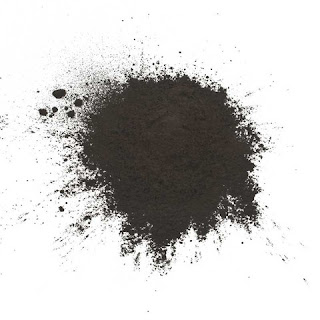We did a bit of research before adding Humic Acid at Mary's Heirloom Seeds. Here's what we found:
Humic acid isn't really acid so don't let that word scare you off from using it. Humic acids result from decomposed prehistoric plant and animal matter. These substances enhance soil fertility and beneficial bacteria counts within the solid, contributing to a more symbiotic relationship between plant roots and soil. They also promote soil nutrient uptake, increase crop yields, and aid in preventing frost damage. The best part is it's not very expensive.
Plant bio-stimulants are materials that promote plant growth. The importance of bio-stimulants lies in their ability to promote hormonal activity in plants. Plant hormones are chemical communicators, or agents, which help regulate a plant’s development and its response to its surrounding environment. Bio-stimulants also promote antioxidant production in plants which, in turn, reduces “free radicals”. Free radical molecules result from stress such as drought, heat, ultraviolet light and herbicide use. Free radicals are damaging because they are strong oxidizing agents which damage lipids, proteins and DNA within plant cells. Antioxidants are metabolites and enzymes which seek out free radical molecules and protect plants from damage.
Why Use Humic Acid?
Today, there is a recognized and increasing use of humic acids for their beneficial impact on the growth and cultivation of crops (vegetable & non-vegetable), citrus, turf, flowers, and particularly in organically-deficient soils. Humic acid is not a fertilizer as it does not directly provide nutrients to plants, but is a compliment to fertilizer. Benefits include:
- Addition of organic matter to organically-deficient soils
- Increase root vitality
- Improved nutrient uptake
- Increased chlorophyll synthesis
- Better seed germination
- Increased fertilizer retention
- Stimulate beneficial microbial activity
- Healthier plants and improved yields
When applied to clay soils, humic acid can help break up compacted soils, allowing for enhanced water penetration and better root zone growth and development. When applied to sandy soils, humic acid adds essential organic material necessary for water retention thus improving root growth and enhancing the sandy soil's ability to retain and not leach out vital plant nutrients.
Plant growth is also improved by the ability of the plant to uptake and receive more nutrients. Humic acid is especially beneficial in freeing up nutrients in the soil so that they are made available to the plant as needed. For instance if an aluminum molecule is binded with a phosphorus one, humic acid detaches them making the phosphorus available for the plant. Humic acid is also especially important because of its ability to chelate micronutrients increasing their bio-availability.
How much to add: Humic acid can be purchased in bulk so it goes a long way and does not spoil. Make sure you incorporate this amendment but please follow directions as a little goes a long way.
A good start rate is 1cup per 100 sf
Was this information helpful? If you have additional questions please feel free to ask.
Sign up for our E-Newsletter



3 comments
If you purchase Humate from Mary’s Heirloom Seeds there are directions for use on the label. Here’s the information provided:
When applied to clay soils, humic acid can help break up compacted soils, allowing for enhanced water penetration and better root zone growth and development. When applied to sandy soils, humic acid adds essential organic material necessary for water retention thus improving root growth and enhancing the sandy soil’s ability to retain and not leach out vital plant nutrients.
Directions:
Add 1 cup per 100 sq ft to garden beds/soil prior to planting. For Compost tea, add 2 tablespoons per 5 gallon bucket
When applying humic acid…can I expect some benefits the first year?
Or is this a several season wait for results?
Can I speed up the process, but adding several applications over say, the Summer season?
Thank you!!
Kelley
How do we apply the humate acid? Just received it and are eager to give it a try!
Also we will soon be planting fruit trees, how do we apply it for the situation?
We are located in the desert southwest with caliche and clay soil.